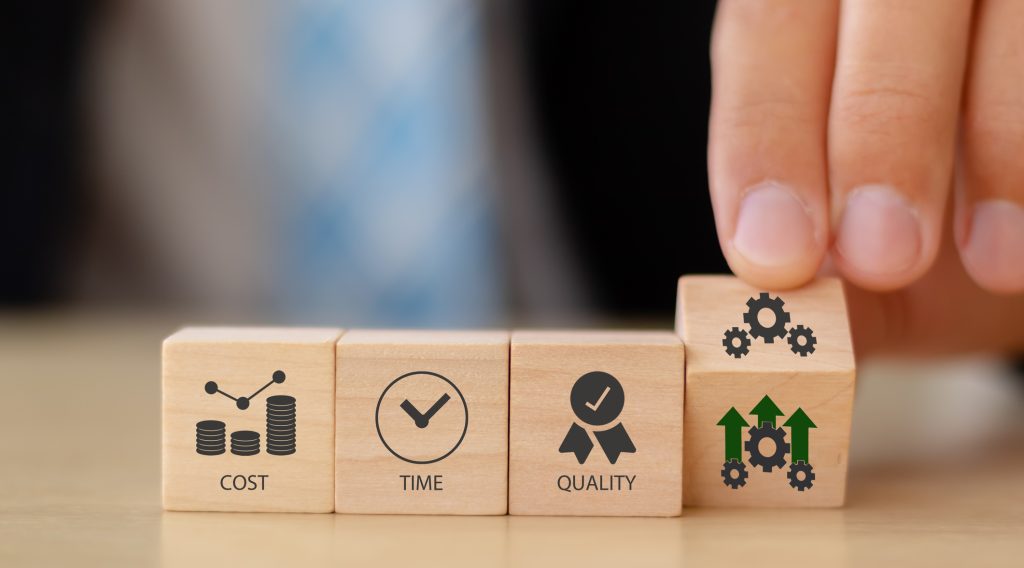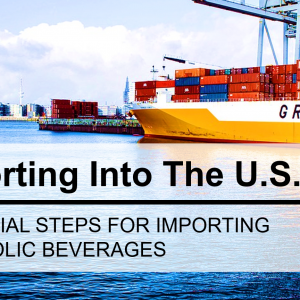Managing Your Beverage Formulation Cost
You are about to start your beverage development project when you discover that one of your key ingredients won’t be available until well after your planned launch date. After some analysis, your formulation team presents you with three options:
- You can attempt to push back your launch date.
- You can use an alternate ingredient that you can procure in time. It has the same cost but may be challenging to integrate into your existing formulation and product profile.
- A third option is to spring for a more expensive ingredient that easily maintains or enhances the quality of your beverage and can meet your timeline but costs twice as much.
Which option do you choose?
Balancing Beverage Development Cost Constraints
All beverage development projects face competing time, cost, quality, risk, resources, or scope constraints. With the current state of the supply chain, those constraints have become even more evident and intense. How do you balance the ever-changing demands of product development while constantly balancing all of these constraints?
Understanding how beverage development project constraints impact each other and learning how to identify which factors are most important to your beverage helps you clearly communicate your priorities to your beverage development team and ensure a successful project.
What are competing constraints?
As with most projects, beverage development projects face three major constraints:
- Time (product development timeline)
- Money (product development budget)
- Quality (how well your beverage formulation achieves your product development goals)
Various project management theories address these competing constraints. The Project Management Triangle, also known as the Iron Triangle, Triple Constraint, or Pick 2, illustrates how time, money, and quality relate to each other. The thinking behind the Project Management Triangle is that you can only optimize two of these three variables simultaneously. For example, if you want to optimize for time, you will likely have to sacrifice either quality or cost.
To make informed decisions about your beverage product development project, you need to understand how these constraints interact with each other and which ones are most important to you.
When Beverage Development Constraints Compete
The driving idea behind competing constraints is that you can’t develop a quality-driven beverage quickly and inexpensively. You have to pick two at the sacrifice of the third.
For example, you can:
- speed up your project timeline and maintain quality, but may incur more costs
- get to market more quickly and with fewer costs, but risk sacrificing the quality of your beverage
- maintain quality and reduce costs, but extend your development timeline
These competing priorities are even more apparent in a world where supply chain disruptions introduce new constraints daily, sometimes hourly.
Strategies for Reducing Beverage Formulation and Development Costs
Prioritize, Define, and Communicate Your Beverage Development Constraints
There is no “correct” constraint to focus on. You and your team get to choose which ones are most important to you at any given time. But it is critical to clearly and consistently explain and reinforce what the constraints mean to you.
Vague words like “quality” and “affordable” need more detail to create a common understanding. Many metrics can define quality. For a beverage, quality metrics might include flavor, aroma, mouthfeel, appearance, and shelf-life stability. “Affordable” is relative and can be defined in terms of price per serving, price per ounce, or some other metric that makes sense for your beverage.
You Drive The Process
When it’s your beverage, it is ultimately up to you to decide what is most important and to communicate your priorities. Every decision you make about your formulation will reflect your approach to the three often competing elements of cost, quality, and time.
Set clear, S.M.A.R.T. (specific, measurable, achievable, relevant, and time-bound) project goals at the beginning of your beverage development project to ensure that you and your team are always aware of the beverage development constraints that are most important to you. This clear understanding allows you to more readily identify potential trade-offs, make informed decisions about your beverage project, and develop a successful product that meets your consumers’ needs.
Contact a Beverage Specialist Today
Don’t Be Afraid To Ask Questions
Understanding the impact of your product development decisions is more about asking the right questions than having all of the answers.
To understand the implications of your decision in the ingredient example above, some questions you might want to explore include:
- What is the impact of this ingredient on our beverage’s flavor?
- How does this ingredient affect our beverage’s appearance?
- What is the cost per serving of this ingredient, and how does it compare to other ingredients we’re considering?
- What is the lead time for this ingredient, and how does that compare to other ingredients we’re considering?
The information you gather will impact your decision. If an ingredient altered the appearance of your beverage but maintained its flavor, you might be compelled to make the switch – if the price fell within a certain range. And that criteria may change over time. But you can’t make the best possible decision if you don’t have accurate and up-to-date information about your options.
Stay Informed and Flexible
You may prioritize constraints differently for different decisions – and that’s ok. Allow yourself room to assess your options and pivot when necessary. You may opt to extend your previously prioritized timeline to strategically source or develop a key ingredient for your beverage. That doesn’t mean you can’t prioritize speed again when choosing your beverage’s packaging. It’s your decision and your journey.
The beverage development process can be complex, but it doesn’t have to be overwhelming. Start your beverage development project with a clear understanding of your priorities, and be prepared to ask lots of questions along the way. Your beverage development team is here to help you navigate the journey and develop a beverage that meets your needs and exceeds your consumers’ expectations.



